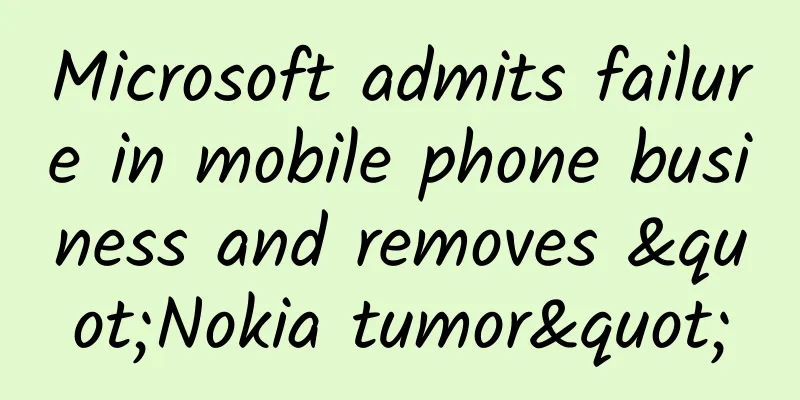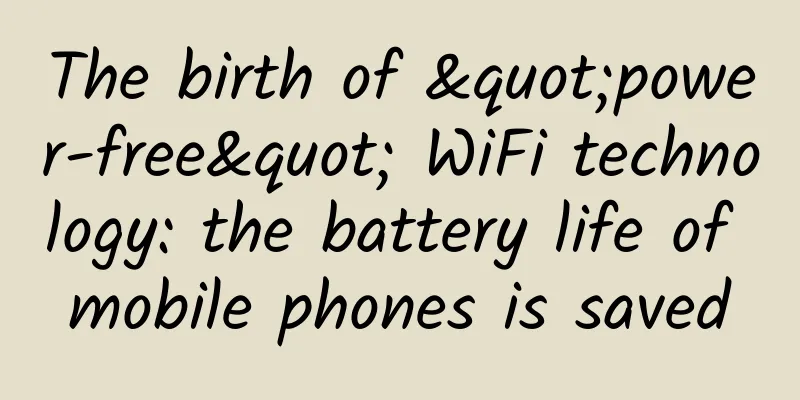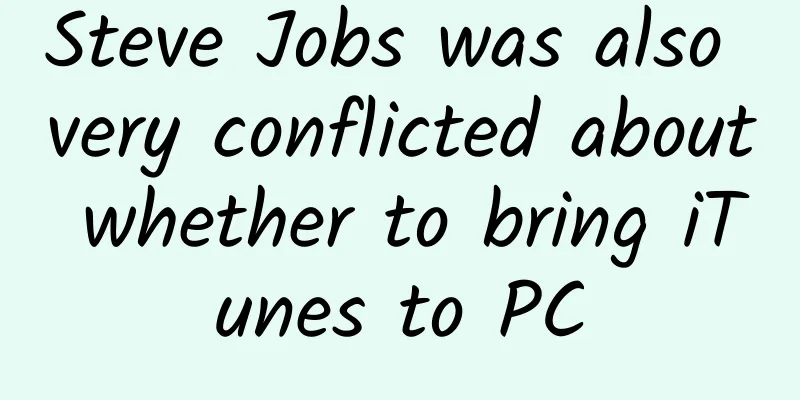Microsoft admits failure in mobile phone business and removes "Nokia tumor"

|
After continuing to invest resources in the smartphone business but still being stuck in the quagmire, Microsoft CEO Satya Nadella knew it was time to make a "difficult decision." On Wednesday, Microsoft officially announced that it would restructure its mobile phone hardware business and lay off up to 7,800 employees. Microsoft will also write down the assets acquired from the Nokia device and service business by about $7.6 billion and record restructuring costs of $750 million to $850 million. This write-down far exceeds the total expenditure Microsoft made when it acquired Nokia's mobile phone business. Nadella announced the news to Microsoft employees in a memo, saying, "Our strategy is shifting from growing a standalone phone business to building and growing a vibrant Windows ecosystem, including our own device product line. In the short term, we will operate a more efficient and focused phone product line while maintaining our long-term ability to drive change in the mobile industry." Microsoft believes that this is one of a series of measures taken recently to sort out work priorities, including adjustments to the engineering and leadership teams, the sale of part of the map business to Uber, and adjustments to the display advertising business. Among them, the announcement of the departure of Elop, the former CEO of Nokia and executive vice president of Microsoft's devices and services business, is the most eye-catching information in this adjustment. Regarding this series of seemingly self-help measures, IDC analyst Yan Zhanmeng said that Microsoft's plan to use Nokia to better expand its mobile operating system development plan has not been successful. But more radical voices said that such a significant asset write-down means that the $7.18 billion acquisition payment Microsoft paid more than a year ago has gone down the drain. The American technology news website BGR pointed out that Microsoft's major adjustment this time is actually equivalent to "waving the white flag" (announcing surrender) in the competition in the smartphone market. Two years ago, Microsoft used a 30-page PPT to explain why it wanted to acquire Nokia. The reasons included expanding its smartphone market share and increasing profits from its mobile phone business; guarding against leaders Google and Apple; and seizing the development trend of smartphones. At present, it seems that Microsoft's original beautiful vision is still stuck in those pages of PPT. Lumia did not boost WP growth After completing the acquisition of Nokia's Devices and Services Division in April 2014, Microsoft made a bolder move to de-Nokiaize its products. In November 2014, Microsoft released the Lumia 535, announcing to the outside world that it had officially replaced the Nokia brand. However, this was just an entry-level phone, and news about a series of high-end Lumia models was only seen in reports from some vertical technology blogs. Worse still, the already marginalized Windows Phone (hereinafter referred to as WP) is losing share in the global smartphone market. According to data from market research firm Gartner, a total of 35.133 million WP devices were sold worldwide in 2014, accounting for 2.8% of the market share, compared to 3.2% in 2013. CEO Satya Nadella has made it clear that the 18% growth in Lumia sales cannot match Microsoft's investment in the WP platform. Nadella said recently: "As we execute our Windows 10 independent hardware plan, we need to take further action to reduce device costs." In the fierce market competition, WP can no longer compete with Apple and Android. This situation is not limited to major markets such as Europe, America and China. Yan Zhanmeng said that in emerging markets such as Africa and Southeast Asia, Microsoft also has difficulty meeting the needs of local people. The main reason is that at the operating system level, the mobile phone products launched by Microsoft cannot meet the local market demand, there are relatively few applications, and the experience of commonly used applications is poor. Although it still performs well in the commercial market, it is still not enough to promote Microsoft's overall development in the mobile phone market. Unlike hardware devices such as PCs, the mobile phone market focuses more on the consumer level. Microsoft is invading other platforms Some analysts even believe that Microsoft will completely withdraw from the smartphone manufacturing field because its internal resources will be poured into a series of WIndows 10 devices and the announcement of compatibility with iOS and Android applications on Windows 10. Microsoft recently released four new SDKs (development packages) to help developers use existing code bases for development, including those for Android and iOS. In the Android market, Microsoft's actions are even bigger. Earlier this year, Microsoft announced that it would provide Windows 10 technical preview to users of its Xiaomi phones that support Android. Not only that, Microsoft has begun to promote its core products to Android and iOS platforms. On the Android platform, Microsoft has provided multiple applications including OneDrive, OneNote, Office, Outlook, etc. On the iOS platform, Microsoft has released about 60 applications and games that run on iPhones and iPads. Microsoft is reaching a new cooperation with Android smartphone and tablet manufacturers to allow its apps to be pre-installed on more devices. Samsung's latest Galaxy flagship smartphones are pre-installed with Microsoft applications, including file sharing application OneDrive and voice calling service Skype. In addition, the two sides have announced that they will further expand their cooperation. Microsoft's official blog shows that manufacturers such as LG and Sony have signed relevant agreements with it, and its partners in China include Cube, Haier and Teclast. Therefore, Microsoft urgently needs the cooperation of the hardware industry chain. However, similar to the doubts faced by Google's acquisition of Motorola and HP's acquisition of Plasma, the acquisition of a hardware manufacturer will affect the confidence of other hardware partners in market expectations. Except for Nokia before Microsoft's acquisition and some Chinese manufacturers such as Lenovo, Microsoft has always lacked the support of strong well-known manufacturers. In fact, this mode of acquiring individual manufacturers has not resulted in explosive growth in operating systems. Google has already stumbled in its decision to acquire Motorola, and this time Microsoft has made the same decision. "Mass production of hardware has never been something American companies are good at," Yan Zhanmeng told Tencent Technology. Layoffs continue as Lumia's fate becomes uncertain This round of layoffs is part of Microsoft's massive layoff plan after the completion of the merger. In July 2014, Nadella announced in a memorandum that Microsoft would lay off about 18,000 employees in more than a year, of which Nokia's equipment and services department would account for about 12,500. This is considered to be Microsoft's largest layoff in the past four years. According to Microsoft's plan at the time, 13,000 of them were to be laid off by the end of 2014, and the rest by June 30, 2015. The total restructuring costs were estimated to be $1.1 to $1.6 billion. In the previous round of layoffs, Nokia's China region was the hardest hit because its R&D was mainly focused on feature phones. Wang Yang, research director of IHS iSuppli China, said that although Microsoft's smartphone business still has about 30 million units shipped a year, it is difficult to support operating expenses. The reduction of 7,800 employees in operating costs is also important to Microsoft. Regarding this round of layoffs, Microsoft responded to Tencent Technology that "it is mainly concentrated in the mobile phone business department, and jobs will be reduced in some areas." However, Microsoft did not explain which specific areas were included. At the same time, Microsoft also said that it is adjusting its business focus and unifying its pace around the company's vision, which includes reshaping productivity and business processes, building an intelligent cloud platform, and creating more personalized computing. However, it also announced a plan to restructure its mobile phone hardware business, which means that the Lumia business may not be shut down directly as outsiders speculate. Foreign media analyzed that what Microsoft is most concerned about at the moment is that there should be no blind spots on smartphones in the entire Windows application ecosystem. What we can see is that Lumia, Surface, Xbox and HoloLens will still be part of Microsoft's future, but to some extent, it is just a way to showcase the Windows platform. |
<<: Ask yourself! 15 questions that IT technicians must think about
>>: JSPatch – Dynamically update iOS apps
Recommend
The flood season has arrived! There may be a "big pit" under the calm water surface. What should you do if you accidentally drown?
Recently, a couple in Yuncheng City, Shanxi Provi...
"How to Play Xianyu Without Source (Beginner + Advanced)" is a startup project suitable for personal Internet
Training course content: This set is the most sui...
Shen Yi: The Protagonists in the White House
Lecturer Shen Yi Introduction Professor of Intern...
Volkswagen: Volkswagen will deliver 2.1989 million vehicles in China in 2024, a year-on-year decrease of 8.3%
Volkswagen released its global delivery data for ...
Solid info! A brief discussion on 4 ideas for community user growth
Well, let’s start from the small circle again. Re...
Ali Baichuan is here: Who might have a headache?
Yesterday, Alibaba Wireless launched the Baichuan...
The love and hate of a pixel, the troubles between programmers and designers
I didn’t intend to stir up the so-called conflict...
Hejun "Zeng Qiao's Capital Observation" Season 5
Supported by a 30-person research team, each sess...
Analysis of marketing strategies under the trend of “her economy”!
• Introduction• The purpose of female consumers b...
Why do animals experience rigor mortis after death, but supermarket meat does not?
People who like to watch detective movies and rea...
How to create a mobile game in Japan that generates over 100 million yuan in monthly revenue?
At the Gamer 2015 Mobile Game Developer Conferenc...
During Tsinghua University's anniversary celebration, he became a hot topic. His academic title alone is enough to keep you hooked for a minute!
On the occasion of Tsinghua University's 113t...
Comprehensive understanding of B-side product design: How to understand demand?
In the previous article "Comprehensive Under...
Analysis | Why is it becoming increasingly difficult to make Internet products?
Recently, Andrew Chen, head of user growth at Ube...









